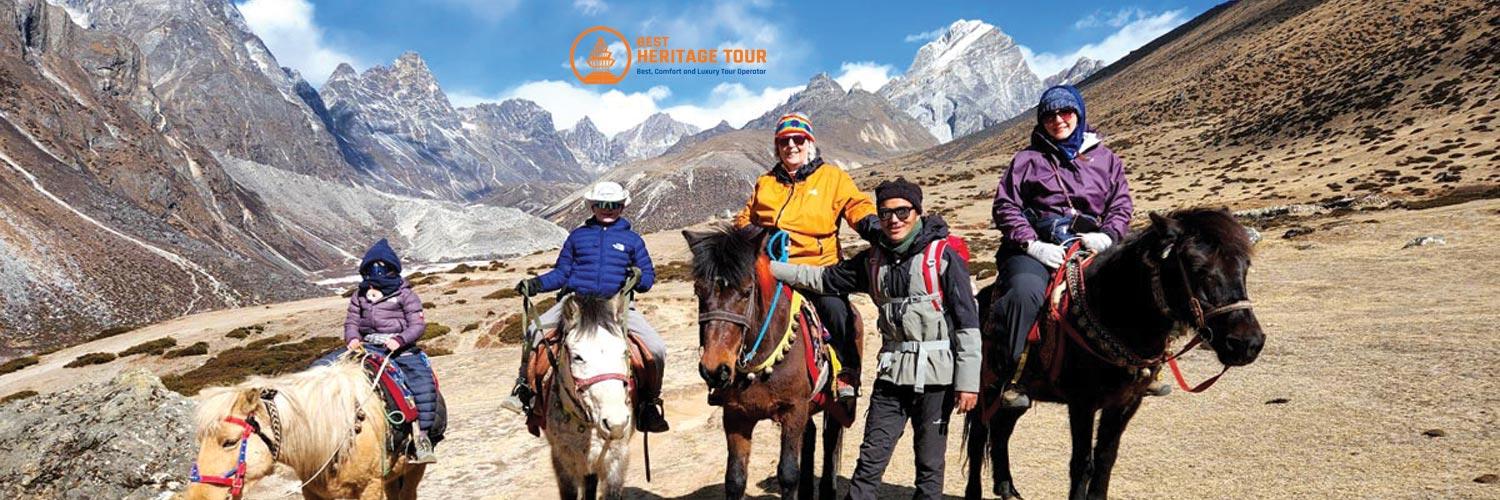The Everest Base Camp Trek (EBC) is a once-in-a-lifetime adventure, offering a chance to experience some of the most breathtaking landscapes in the world. However, packing for this iconic trek can be a challenge, as you'll need to be prepared for varying weather conditions, rugged terrain, and high-altitude environments. To help you prepare for your EBC adventure, we’ve compiled the ultimate Everest Base Camp gear checklist, ensuring you're fully equipped for every aspect of your journey.
Essential Packing List for Everest Base Camp Trek
When preparing for the Everest Base Camp Trek, it's crucial to prioritize lightweight, durable, and functional gear. The weather in the Himalayas can change rapidly, and temperatures can drop significantly as you gain altitude. Here's everything you need to pack for a safe and comfortable trek.
1. Trekking Clothing for Everest Base Camp
Base Layers
- Moisture-wicking shirts and leggings: Choose lightweight, moisture-wicking base layers to keep you dry and comfortable throughout the day.
- Thermal underwear: Especially at higher altitudes, thermal undergarments will help regulate your body temperature.
Mid Layers
- Fleece jacket: Lightweight yet warm, a fleece jacket provides excellent insulation for cold evenings.
- Down jacket: For extreme warmth, a down jacket is essential to protect you from the chilly nights at higher altitudes.
Outer Layers
- Waterproof jacket: A windproof and waterproof jacket is necessary to protect against rain, snow, and wind.
- Waterproof trekking pants: Protect your legs from rain and mud with durable waterproof pants.
Trekking Pants and Shorts
- Quick-dry trekking pants: Opt for lightweight, breathable, and quick-drying pants for comfort on the trail.
- Convertible pants: These versatile pants can be turned into shorts when temperatures rise.
2. Footwear for Everest Base Camp Trek
Trekking Boots
- Sturdy, high-ankle boots: A pair of waterproof trekking boots with ankle support is essential for the uneven and rocky terrain of the Everest trek.
Camp Shoes
- Lightweight sneakers or sandals: After a long trek, a pair of comfortable camp shoes will allow your feet to breathe.
Trekking Socks
- Moisture-wicking socks: Avoid blisters by wearing woolen or synthetic socks that keep your feet dry throughout the trek.
3. Accessories for the Everest Trek
Headwear
- Warm hat: A snug beanie or hat to keep your head warm, especially in cold mornings and evenings.
- Sun hat: Protect your face and neck from the sun at lower altitudes.
Gloves
- Warm gloves: Pack thermal or insulated gloves for cold nights and higher elevations.
- Lightweight gloves: Useful for day treks when the weather is milder.
Sunglasses
- UV-protection sunglasses: The sun's UV rays are stronger at high altitudes, so ensure you have polarized sunglasses for maximum protection.
Buff or Neck Gaiter
- A versatile buff can be used as a neck warmer, face mask, or headband to protect against cold and dust.
4. Sleeping Gear for Everest Base Camp Trek
Sleeping Bag
- A high-altitude sleeping bag rated for temperatures as low as -20°C (-4°F) is necessary for warmth during your stay in teahouses or camps.
Sleeping Liner
- Consider a sleeping liner to add an extra layer of warmth and comfort in the cold environments of the trek.
5. Hydration and Nutrition
Water Bottles and Hydration Systems
- Carry at least 2 liters of water at all times to stay hydrated. A hydration system (like a Camelbak) offers easy access to water during the trek.
- Water purification tablets: These can help purify water from streams when clean water sources are scarce.
Energy Snacks
- Stock up on energy bars, trail mix, and nuts. High-calorie, easy-to-carry snacks are crucial for keeping your energy levels up on long trekking days.
6. Personal Items
Backpack
- A 30-40 liter daypack is ideal for carrying your essentials, including water, snacks, and camera gear.
- Main trekking bag: A larger duffel or backpack for porters to carry your bulkier items.
Personal Hygiene
- Toothbrush, toothpaste, and wet wipes: These basic hygiene items will help you freshen up after a long day.
- Biodegradable soap: Use eco-friendly soap to protect the environment and local water sources.
7. First Aid Kit for Trekking
A first aid kit is essential for any trek. Be sure to include:
- Pain relievers like ibuprofen or aspirin.
- Anti-nausea medication for altitude sickness.
- Band-aids and blister pads.
- Antiseptic cream to treat cuts and scrapes.
8. Electronics for Everest Base Camp Trek
Headlamp
- A reliable headlamp is crucial for early morning starts or evening treks. Be sure to pack extra batteries.
Power Bank
- Charging stations can be limited along the trek, so a solar-powered charger or high-capacity power bank is a must-have for recharging your devices.
Camera Gear
- The views of the Himalayas are unforgettable, so bring a camera and extra batteries to capture the beauty of the trek.
9. Documents and Money for the Trek
- Passport: Your passport is required for permits.
- Everest permits: Make sure you have the necessary Sagarmatha National Park and TIMS permits.
- Cash: Carry sufficient Nepali Rupees for small purchases at teahouses along the way.
Conclusion:
Packing for the Everest Base Camp Trek requires careful planning and consideration. The gear you bring will impact both your comfort and safety on the trail. Use this Everest Base Camp gear checklist to ensure you're fully prepared for your journey to one of the world's most spectacular destinations. With the right equipment, you'll be able to enjoy every moment of this once-in-a-lifetime adventure. For more detailed information, please check out the equipment list provided by Best Heritage Tour.
Contact Best Heritage Tour Company
Visit Best Heritage Tour Pvt.Ltd. official website to gather information about BHT services.
Look for contact details (Phone number/Viber /What’s App: +9779851149197 / +9779810043046), Email: bestheritagetour@gmail.com/ info@bestheritagetour.com to get in touch with them directly.
Author: Best Heritage Tour
Date: 25th March, 2025

